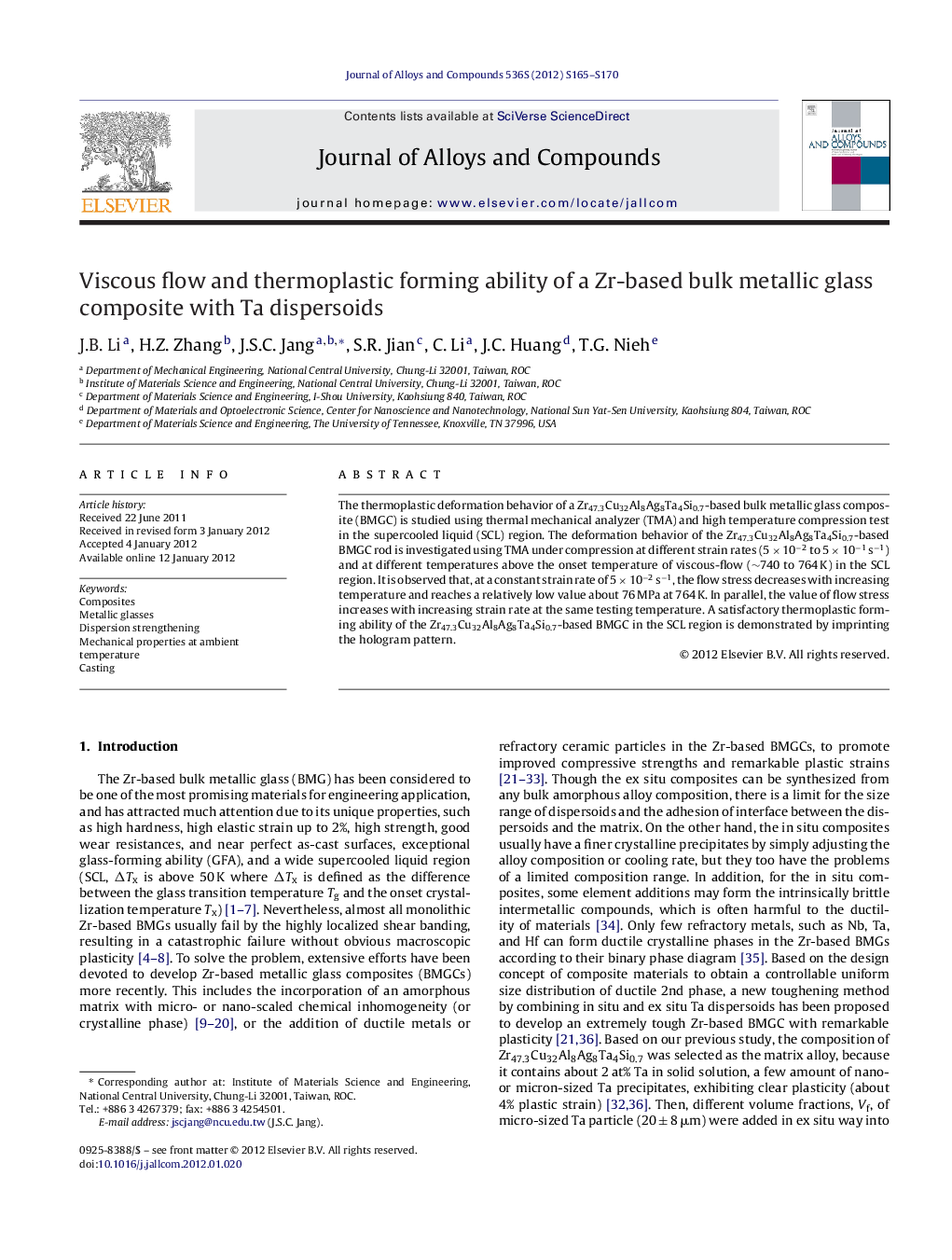| Article ID | Journal | Published Year | Pages | File Type |
|---|---|---|---|---|
| 1615902 | Journal of Alloys and Compounds | 2012 | 6 Pages |
The thermoplastic deformation behavior of a Zr47.3Cu32Al8Ag8Ta4Si0.7-based bulk metallic glass composite (BMGC) is studied using thermal mechanical analyzer (TMA) and high temperature compression test in the supercooled liquid (SCL) region. The deformation behavior of the Zr47.3Cu32Al8Ag8Ta4Si0.7-based BMGC rod is investigated using TMA under compression at different strain rates (5 × 10−2 to 5 × 10−1 s−1) and at different temperatures above the onset temperature of viscous-flow (∼740 to 764 K) in the SCL region. It is observed that, at a constant strain rate of 5 × 10−2 s−1, the flow stress decreases with increasing temperature and reaches a relatively low value about 76 MPa at 764 K. In parallel, the value of flow stress increases with increasing strain rate at the same testing temperature. A satisfactory thermoplastic forming ability of the Zr47.3Cu32Al8Ag8Ta4Si0.7-based BMGC in the SCL region is demonstrated by imprinting the hologram pattern.
Graphical abstractCompressive flow stress clearly decreases with lower compressive strain rate as well as higher compression temperature, as shown in (a) The lowest flow stress, 76 MPa, can be obtained at 764 K with strain rate of 5 × 10−2 s−1. A submicron-scaled hologram pattern was replicated by hot pressing the Zr-based BMGC plate against a die engraved with submicron-scaled groove at 756 K as illustrated in (b). The enlarged SEM image of the replicated hologram pattern in (c) shows grooves about 0.6 μm in depth, indicating relatively good microforming ability for this Zr47.3Cu32Al8Ag8Ta4Si0.7-based BMGC in the SCL region.Figure optionsDownload full-size imageDownload as PowerPoint slideHighlight► Deformation behavior of the Zr-based BMGC within the SCL region reveals that a relatively low viscosity between 108 and 1010 Pa s. ► More than 60% plastic strain can be obtained readily by compression test at the temperatures within SCL region under different strain rates. ► All evidences of the XRD analysis and TEM characterization confirms that the amorphous phase in Zr4-based BMGC would keep stable after hot compression. ► A strain rate sensitivity exponent (m) more than 0.35 was measures for the Zr-based BMGC deformed at 756 K, and 764 K. ► The imprinted hologram pattern with 0.6 μm depth grooves demonstrates relatively good microforming ability for this Zr-based BMGC.
